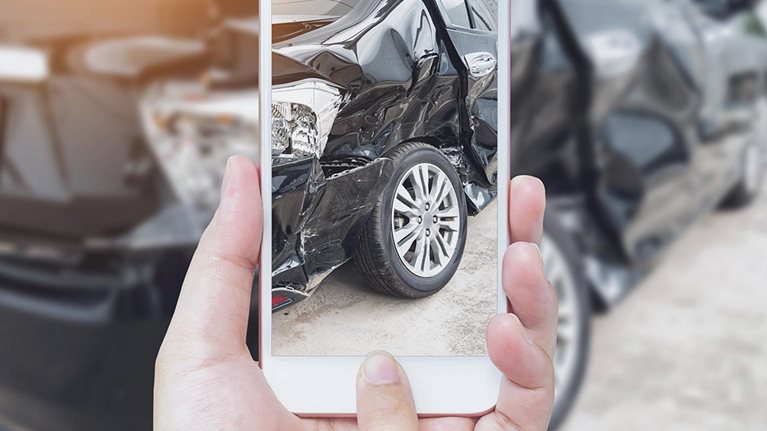No one knows exactly how the COVID-19 pandemic and its long-term implications will unfold. The outbreak is already presenting enormous challenges to families, communities, and nations, along with businesses of all kinds and the global economy.
When it comes to the property and casualty industry, the pandemic will slow growth, strain profitability, and pose new operational challenges—that much is clear. We have already seen these effects begin to play out in North America, and as we look to the impact in Asia and Europe, we expect these challenges to continue.
Claims leaders are taking swift action to protect their employees, with many enabling more than 90 percent of their workers to work remotely. They are also mobilizing staff in new ways as their outsourcing providers shut down, rapidly deploying automation technology, and addressing slowdowns in some of their critical business areas. For example, mail delivery may be slower than usual, closed courts are delaying typical dispute-resolution methods (mediation, arbitration, and litigation), and medical-treatment time frames may be extended.
Claims organizations have faced crises before, particularly localized catastrophes such as Hurricane Katrina and Hurricane Sandy. Now they must respond to the COVID-19 pandemic, focusing on their employees, their customers, and the path forward. Carriers should continuously improve processes and operating rhythms to help employees work remotely, engage internal and external stakeholders effectively, and manage various parts of the claim process (including inspections, dispute resolution, and medical treatments). A set of recommendations for claims organizations focuses on two priorities:
- actions to protect the core business and build resilience over the next three to 12 months
- strategic moves to emerge stronger and smarter as the economy recovers
Near-term actions to protect the core business and build resilience
Claims leaders can play a vital role in helping their colleagues and customers stay safe and positioning their organizations for the future. We expect COVID-19 to affect claims differently in each line of business, but carriers can take many of the same actions to build resilience across the board.
Start with employees
As employees shift to remote work, carriers should focus on helping people work effectively in a new environment and prioritize their health, well-being, and morale. Developing new processes and implementing more frequent check-ins can help people feel resilient and engaged in times of disruption. Additionally, leaders should ensure that employees have the tools and technology they need to do their jobs from home as they adjust to a different way of working. In all lines, sudden shifts in claim volume may require carriers to update forecasts, identify gaps in claims-handling capacity, and adjust staffing models accordingly. To close staffing gaps, carriers may need to cross-train people and find those in project-based or nonessential roles to assist in claims handling in areas where demand may spike.
Implement new operational strategies
Reporting could become more complex, and companies could miss opportunities to characterize and isolate the impacts of COVID-19. Carriers should develop a COVID-19 catastrophe code for all lines to clearly segment related claims and enable analytics to quantify impact based on pre-pandemic forecasts and actuarial models.
In addition, claims leaders can proactively manage volatility and set up multidisciplinary teams to address COVID-19 issues specific to a line of business. These teams could help coordinate processes across the organization (involving government affairs, actuarial, underwriting, and law) and carry out a number of important tasks—for example, closely managing business interruption and related issues.
Understand possible claims impacts on each line of business and take action in the near term
The impacts of the COVID-19 pandemic will vary across lines and types of coverage. Here are some of the changes claims leaders should anticipate, along with corresponding actions.
Auto. Early reports show a significant decline in traffic volume and car accidents, with states reporting a decrease in accident volume of 50 to 80 percent.1 Claim frequency and severity should decline in proportion. However, as some small businesses increase delivery services to serve those sheltering in place, new claims in commercial auto could emerge. Carriers can shift auto claim handlers’ capacity to meet more pressing business needs and should seek to meet their customers’ needs—for example, by modifying policies to add new drivers and adding coverages to protect business owners. Many are also offering reduced premiums to their customers because of heavily decreased policyholder mileage and fewer claims as people stay home; those rebates currently total $10.5 billion.2
Property. We expect business-interruption claim volume to rise, including civil authority and contingent business interruption, with a corresponding increase in coverage litigation. As this is a rapidly evolving situation, claims organizations will need to monitor the regulatory, legislative, and litigation environments. While the industry generally does not provide business interruption coverage where there was no direct physical loss, Massachusetts, Ohio, and New Jersey have proposed legislation to mandate that insurers cover losses related to government-ordered shutdowns. At the same time, carriers are experiencing a resulting spike in volume and requests for coverage determination, straining claim handlers and call-center workers. Customer self-service and automation can help ease that strain.
Workers’ compensation. Our industry experience has shown that workers’ compensation claim frequency tends to decline in economic downturns—but ultimately creeps back up. The current crisis is unique, of course, but we anticipate that overall claim frequency could fall as millions of people shelter in place and millions more are unemployed.3 Nonetheless, workers’ compensation carriers may see claims activity due to COVID-19 in several areas:
- Certain high-risk professions that help respond to the pandemic, such as healthcare workers and first responders.
- Increased claim severity and extended return-to-work durations as injured workers cannot receive needed surgeries and treatments because of overloaded medical systems or fears of infection from going to a medical facility. Carriers can identify providers with telemedicine capabilities to avoid disruption in medical treatment and offset a potential increase in durations.
- Ergonomic injuries resulting from changing work environments and people working from home. Carriers may wish to proactively prevent these injuries by providing policyholders with insights into ergonomics or equipment that could support employees working from home.
As always, workers’ compensation carriers will need to pay close attention to compensability and the medical validity of injuries, but they will also need to increase their vigilance around fraud.
General liability. Claim frequency is likely to decline in the short term as people spend more time at home and less time in business locations. However, carriers may see certain companies and professions face bodily injury claims resulting from potential exposure to the virus. As with any claim, insurers will need to assess and verify the facts of loss to understand the extent of the exposure. Claims in active litigation could be delayed as courts shut down, but swift resolution may benefit customers and claimants. As a result, carriers should invest in and pursue virtual methods to guide dispute resolution.
Professional liability. We expect higher claim frequency in select claim segments such as directors and officers (D&O), trade credit, event, and healthcare professional liability. Claims in D&O may arise if shareholders or customers perceive that management has been negligent in planning for and responding to COVID-19. As the pandemic progresses, increases in healthcare professional liability and medical malpractice claims may result from increased exposure to infection as well as capacity and equipment shortages in healthcare systems.
Disability. The frequency and severity of disability claims may rise in response to changing regulations; New York and other states have changed policies to provide family leave specifically due to COVID-19.4 And as in workers’ compensation, claim severity may rise if surgeries and treatments are delayed.
Strategic moves to emerge from the crisis stronger and smarter
In addition to near-term actions, claims organizations will need to improve efficiency and outcomes over the long term. Dedicating resources to those two imperatives can help carriers not only manage the current situation but also emerge from the crisis better prepared for the future. We recommend that carriers make five strategic moves to secure that future.
Respond to rising claim litigation severity. Especially when coupled with the effects of COVID-19, trends such as social inflation—that is, increased insurance claims cost due to social attitudes and litigation expectations—could lead to increased claim severity. Insurers should focus on implementing a best-in-class litigation process and performance management. A consistent litigation strategy supported by balanced scorecards of metrics to manage internal and external counsel performance will be more important than ever as litigation volumes increase in unexpected ways and dispute resolution is handled virtually.
Harness predictive analytics to improve claims outcomes. Claims leaders that can tap their troves of claims data could create predictive models that significantly improve claims outcomes. For example, they may conduct more effective return-to-work monitoring and create better guidelines for workers’ compensation and disability. Alternatively, they may improve early intervention—for instance, identifying claims likely to jump in severity, such as claims that evolve from short- to long-term disability. Others may focus more keenly on medical management or use predictive models to route litigated cases to the right attorney.
Accelerate digital and automation transformations. Digitizing and automating processes can make end-to-end claims journeys more efficient, protect against future outsourcing interruption, and better manage responses during claim volume spikes. Carriers can start by enabling customer self-service for routine inquiries or implementing natural language processing to extract sentiment and nuance from customer or claimant emails, which would evolve into automating medical record ingestion and medical bill review. These actions can help carriers mature into straight-through claims processing.
Prepare the workforce for a digital future. The pandemic-triggered shift to virtual working and subsequent increased need for customer self-service and digitization will accelerate a change in the role of the claim handler. As artificial intelligence and automation become more significant in the claims process, the function of the claim handler will shift from technical adjudication to value creation. And as carriers shift work to remote environments, they should identify the skills needed for their future-state organizations, help valuable employees acquire those skills, and when necessary, look outside the organization for people who can fill gaps.
Reassess the network of service providers. Many vendors and small businesses may be under significant financial strain as they try to adopt a new virtual working model or shift focus to more immediate needs of the crisis. This could mean repair shops go out of business or preferred providers can no longer treat patients. Carriers may need to rebuild a more resilient and flexible preferred network, shifting their preferred medical providers to those more comfortable with telemedicine.
Like many other times in human history, we will learn much from this crisis. Claims organizations will be able to reflect on the moves they made and how they were able to support colleagues and customers. Building on these lessons, claims leaders can put their organizations on a stronger path forward.


